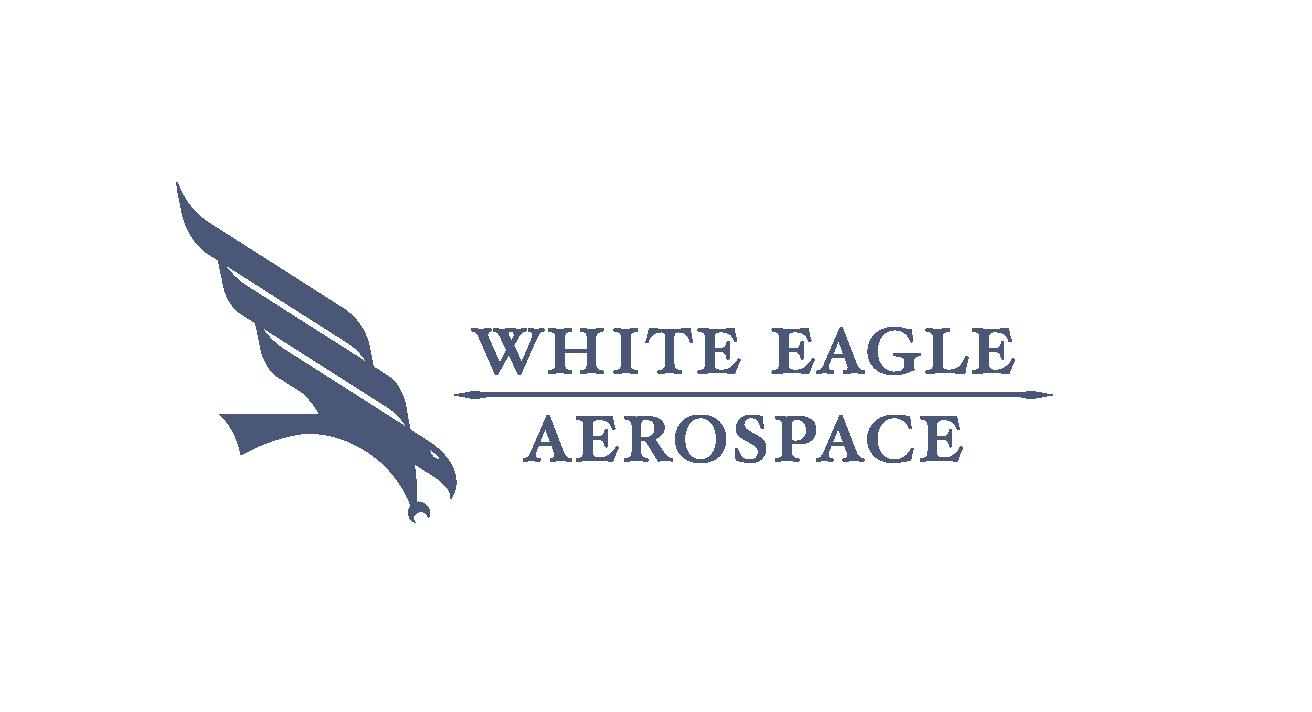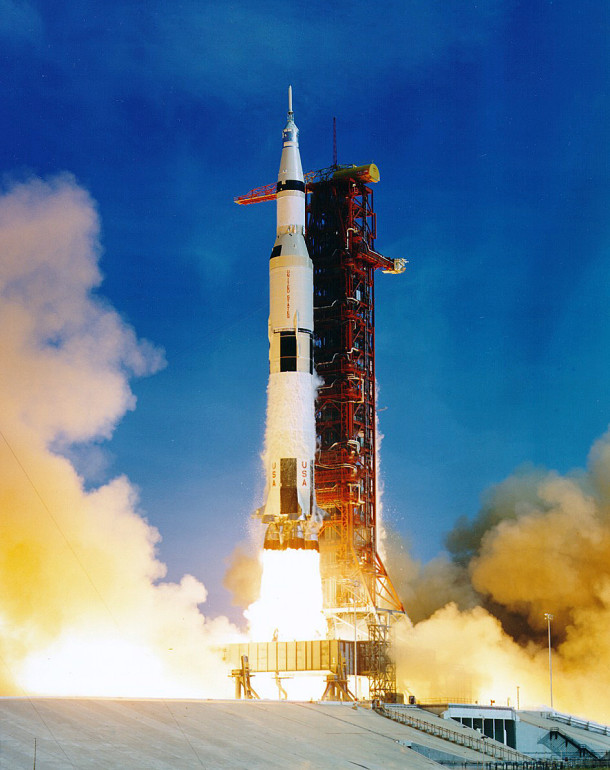
Forty-eight years ago this month, the epic flight of Apollo 11, the first mission to land men on the Moon, began with launch from the Kennedy Space Center (KSC) at Merritt Island, Florida. Nearly 1-million people gathered around America’s famous space complex to witness the historic event. An estimated 1-billion viewers worldwide watched the proceedings on television.
The names of the Apollo 11 crew are now legend: Mission Commander Neil A. Armstrong, Lunar Module Pilot Edwin E. Aldrin, Jr., and Command Module Pilot Michael Collins. Each astronaut was making his second spaceflight.
The overall Apollo 11 spacecraft weighed over 100,000 pounds and consisted of 3 major components: Command Module, Service Module, and Lunar Excursion Module (LEM). Out of American history came the names used to distinguish two of these components from one another. The Command Module was named Columbia, the feminine personification of America, while the Lunar Excursion Module received the appellation Eagle in honor of America’s national bird.
The Apollo-Saturn V launch stack measured 363-feet in length, had a maximum diameter of 33-feet, and weighed 6.7-milllion pounds at ignition of its five F-1 engines. The vehicle rose from the Earth on 7.7-million pounds of lift-off thrust.
The acoustic energy produced by the Saturn’s first stage propulsion system was unlike anything in common experience. The sound produced was like intense, continuous thunder even miles away from the launch point. Ground and structure shook disturbingly and a person’s lungs vibrated within their chest cavity.
Lift-off of Apollo 11 (AS-506) from KSC’s LC-39A occurred at 13:32 UTC on Wednesday, 16 July 1969. The target for the day’s launch, the Moon, was 218,096 miles distant from Earth. It took 12 seconds just for the massive Apollo 11 launch vehicle to clear the launch tower. However, a scant 12 minutes later, the Apollo 11 spacecraft was safely in low earth orbit (LEO) traveling at 17,500 miles per hour.
Following checkout in earth orbit, trans-lunar injection, and earth-to-moon coast, Apollo 11 entered lunar orbit nearly 76 hours after lift-off. Now, the big question: Would they make it? Even Apollo 11’s Command Module Pilot, Michael Collins, estimated that the chance of a successful lunar landing on the first attempt was only 50/50. The answer would soon come. History’s first lunar landing attempt was now only 24 hours away.
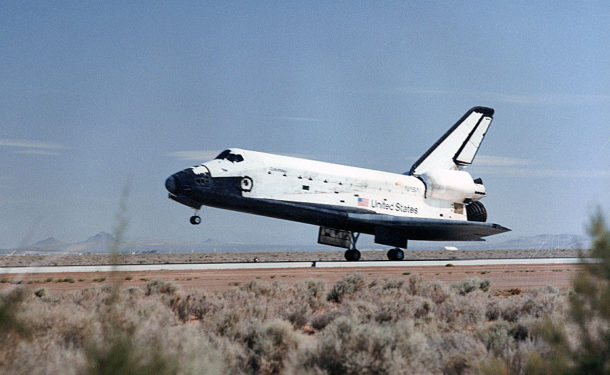
Thirty-five years ago today, the Space Shuttle Columbia landed at Edwards Air Force Base to successfully conclude the fourth orbital mission of the Space Transportation System. Columbia’s return to earth added a special and patriotic touch to the celebration of our nation’s 206th birthday.
STS-4 was NASA’s fourth Space Shuttle mission in the first fourteen months of Shuttle orbital flight operations. The two-man crew consisted of Commander Thomas K. Mattingly, Jr. and Pilot Henry W. Hartsfield who were both making their first Shuttle orbital mission. STS-4 marked the last time that a Shuttle would fly with a crew of just two.
STS-4 was launched from Cape Canaveral’s LC-39A on Sunday, 27 June 1982. Lift-off was exactly on-time at 15:00:00 UTC. This mission stands as the first occasion in which a Space Shuttle launch would occur precisely on-time. The Columbia orbiter weighed a hefty 241,664 lbs at launch.
Mattingly and Hartsfield spent a little over seven (7) days orbiting the Earth in Columbia. The orbiter’s cargo consisted of the first Getaway Special payloads and a classified US Air Force payload of two missile launch-detection systems. In addition, a Continuous Flow Electrophoresis System (CFES) and the Mono-Disperse Latex Reactor (MLR) were flown for a second time.
The Columbia crew conducted a lightning survey using manual cameras and several medical experiments. Mattingly and Hartsfield also maneuvered the Induced Environment Contamination Monitor (IECM) using the Orbiter’s Remote Manipulator System (RMS). The IECM was used to obtain information on gases and particles released by Columbia in flight.
On Sunday, 04 July 1982, retro-fire of the Orbital Maneuvering System (OMS) engines started Columbia on its way back to Earth. Touchdown occurred on Edwards Runway 22 at 16:09:31 UTC. This landing marked the first time that an Orbiter landed on a concrete runway. (All three previous missions had landed on Rogers Dry Lake at Edwards.) Columbia made 112 complete orbits and traveled 2,537,196 nautical miles during STS-4.
The Space Shuttle was optimistically declared “operational” with the successful conduct of the first four (4) shuttle missions. President Ronald Reagan and First Lady Nancy Reagan even greeted the returning STS-4 flight crew on the tarmac.
However, as space history has taught us, manned spaceflight still comes with a level of risk and danger that exceeds that of military and commercial aircraft operations. Despite its unparalled accomplishments and enduring legacy, the Space Shuttle was never operational in the true and desired sense.
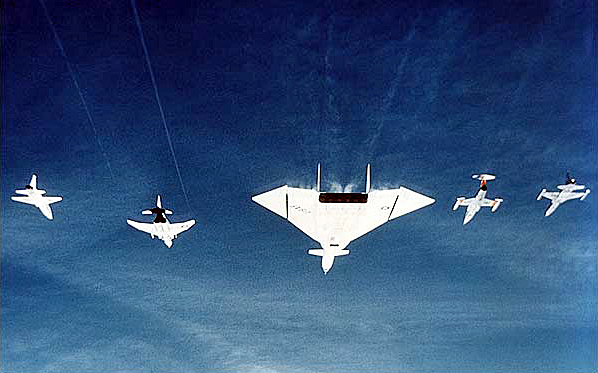
Fifty-one years ago this month, XB-70A Valkyrie Air Vehicle No. 2 (62-0207) and a NASA F-104N Starfighter (N813NA) were destroyed following a midair collision near Bartsow, CA. USAF Major Carl S. Cross and NASA Chief Test Pilot Joseph A. Walker perished in the tragedy.
On Wednesday, 08 June 1966, XB-70A Valkyrie Air Vehicle No. 2 took-off from Edwards Air Force Base, California for the final time. The crew for this flight included aircraft commander and North American test pilot Alvin S. White and right-seater USAF Major Carl S. Cross. White would be making flight No. 67 in the XB-70A while Cross was making his first. For both men, this would be their final flight in the majestic Valkyrie.
In the past several months, Air Vehicle No. 2 had set speed (Mach 3.08) and altitude (74,000 feet) records for the type. But on this fateful day, the mission was a simple one; some minor flight research test points and a photo shoot.
The General Electric Company, manufacturer of the massive XB-70A’s YJ93-GE-3 turbojets, had received permission from Edwards USAF officials to photograph the XB-70A in close formation with a quartet of other aircraft powered by GE engines. The resulting photos were intended to be used for publicity.
The formation, consisting of the XB-70A, a T-38A Talon (59-1601), an F-4B Phantom II (BuNo 150993), an F-104N Starfighter (N813NA), and an F-5A Freedom Fighter (59-4898), was in position at 25,000 feet by 0845. The photographers for this event, flying in a GE-powered Gates Learjet Citation (N175FS) stationed about 600 feet to the left and slightly aft of the formation, began taking photos.
The photo session was planned to last 30 minutes, but went 10 minutes longer to 0925. Then at 0926, just as the formation aircraft were starting to leave the scene, the frantic cry of Midair! Midair Midair! came over the communications network.
Somehow, the NASA F-104N, piloted by NASA Chief Test Pilot Joe Walker, had collided with the right wing-tip of the XB-70A. Walker’s out-of-control Starfighter then rolled inverted to the left and sheared-off the XB-70A’s twin vertical tails. The F-104N fuselage was severed just behind the cockpit and Walker died instantly in the terrifying process.
Curiously, the XB-70A continued on in steady, level flight for about 16 seconds despite the loss of its primary directional stability lifting surfaces. Then, as White attempted to control a roll transient, the XB-70A rapidly departed controlled flight.
As the doomed Valkyrie torturously pitched, yawed and rolled, its left wing structurally failed and fuel spewed furiously from its fuel tanks. White was somehow able to eject and survive. Cross never left the stricken aircraft and rode it down to impact just north of Barstow, California.
A mishap investigation followed and (as always) responsibility (blame) for the mishap was assigned and new procedures implemented. However, none of that changed the facts that on this, the Blackest Day at Edwards Air Force Base, American aviation lost two of its best men and aircraft in a flight mishap that was, in the final analysis, preventable.
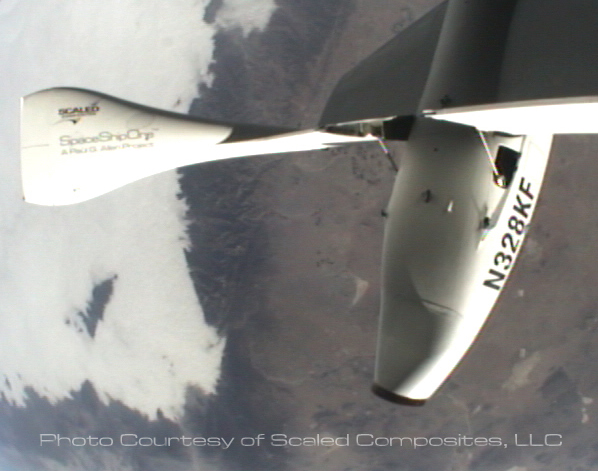
Thirteen years ago today, Scaled Composite’s SpaceShipOne flew to an altitude of 62.214 statute miles. The flight marked the first time that a privately-developed flight vehicle had flown above the 62-statute mile boundary that entitles the flight crew to FAI-certified astronaut wings. As a result, SpaceShipOne pilot Mike Melvill became history’s first private citizen astronaut.
SpaceShipOne Mission 15P began with departure from California’s Mojave Spaceport at 0647 PDT. Carrying SpaceShipOne at the centerline station, Scaled’s White Knight launch aircraft climbed to the drop altitude of 47,000 feet.
At 0750 PDT on Monday, 21 June 2004, the 7,900-pound SpaceShipOne fell away from the White Knight and Melvill immediately ignited the 16,650-pound thrust hybrid rocket motor. Melvill then quickly pulled SpaceShipOne into a steep vertical climb.
Passing through 60,000 feet, SpaceShipOne experienced a series of uncommanded rolls as it encountered a wind shear. Melvill struggled with the controls in an attempt to arrest the roll transient. Then, late in the boost, the vehicle lost primary pitch trim control. In response, Melvill switched to the back-up system as he continued the ascent.
Rocket motor burnout occurred at 180,000 feet with SpaceShipOne traveling at 2,150 mph. It now weighed only 2,600 pounds. The vehicle then coasted to an apogee of 62.214 statute miles (328,490 feet). The target maximum altitude was 68.182 statute miles (360,000 feet). However, the control problems encountered going upstairs caused the trajectory to veer somewhat from the vertical.
Melvill experienced approximately 3.5 minutes of zero-g flight going over the top. He had some fun during this period as he released a bunch of M&M’s and watched the chocolate candy pieces float in the SpaceShipOne cabin.
Back to business now, Melvill transitioned SpaceShipOne to the high-drag feathered configuration in preparation for the critical entry phase of the mission. The vehicle initially accelerated to over 2,100 mph in the airless void before encountering the sensible atmosphere. At one point during atmospheric entry, Melvill experienced in excess of 5 g’s deceleration.
At 57,000 feet, Melvill reconfigured SpaceShipOne to the standard aircraft configuration for powerless flight back to the Mojave Spaceport. Fortunately, the aircraft was a very good glider. The control problems encountered during the vehicle’s ascent resulted in atmospheric entry taking place some 22 statute miles south of the targeted reentry point.
SpaceShipOne touched-down on Mojave Runway 12/30 at 0814 PDT; thus ending an historic, if not harrowing mission.
After the flight, Mike Melvill had much to say. But perhaps the following quote says it best for the rest of us who can only imagine what it was like: “And it was really an awesome sight, I mean it was like nothing I’ve ever seen before. And it blew me away, it really did. … You really do feel like you can reach out and touch the face of God, believe me.”
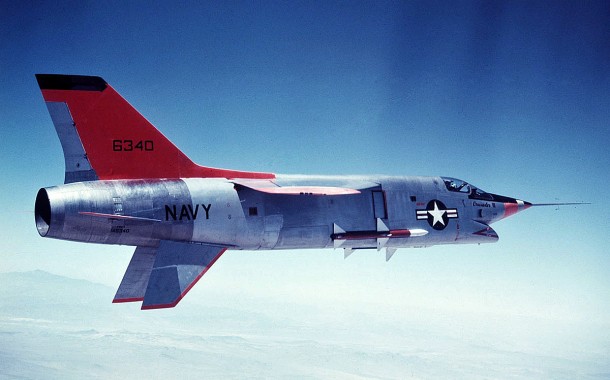
Fifty-nine years ago this month, the USN/Vought XF8U-3 Crusader III interceptor prototype took off on its maiden test flight at Edwards Air Force Base, California. Vought chief test pilot John W. Konrad was at the controls of the advanced high performance aircraft.
The Vought XF8U-3 was designed to intercept and defeat adversary aircraft. Although it bore a close external resemblance to its F8U-1 and F8U-2 forbears, the XF8U-3 was much more than just a block improvement in the Crusader line. It was considerably bigger, faster, and more capable than previous Crusaders and was in reality a new airplane.
The XF8U-3 measured 58.67 feet in length and had a wing span of an inch less than 40 feet. Gross Take-Off and empty weights tipped the scales at 38,770 lbs and 21,860 lbs, respectively. Power was provided by a single Pratt and Whitney J75-P-5A generating 29,500 lbs of sea level thrust in afterburner.
A distinctive feature of the XF8U-3 was a pair of ventrally-mounted vertical tails. These surfaces were installed to improve aircraft directional stability at high Mach number. Retracted for take-off and landing, the surfaces were deployed once the aircraft was in flight.
The No. 1 XF8U-3 (S/N 146340) first flew on Monday, 02 June 1958 at Edwards Air Force, California. Vought chief test pilot John W. Konrad did the first flight piloting honors. The aircraft flew well with no major discrepancies reported. Approach and landing back at Edwards were uneventful.
Subsequent flight testing verified that the XF8U-3 was indeed a hot airplane. The type reached a top speed of Mach 2.39 and could have flown faster had its canopy had been designed for higher temperatures. The flight test-determined absolute altitude of 65 KFT was exceeded by 25 KFT in a zoom climb.
Those who flew the XF8U-3 said that the aircraft was a real thrill to fly. The Crusader III displayed outstanding acceleration, maneuverability and high-speed flight stability. Control harmony in pitch, yaw, and roll was extremely good as well.
Despite its great promise, the XF8U-3 never proceeded to production. This was primarily the result of coming up short in a head-to-head competition with the McDonnell F4H-1 Phantom II during the second half of 1958. While the Crusader was faster and more maneuverable than the Phantom, the latter’s mission capability and payload capacity were better.
Most historical records indicate that a total of five (5) Crusader III airframes were built. The serial numbers assigned by the Navy were 146340, 146341, 147085, 147086, and 147087. None of these aircraft exist today.
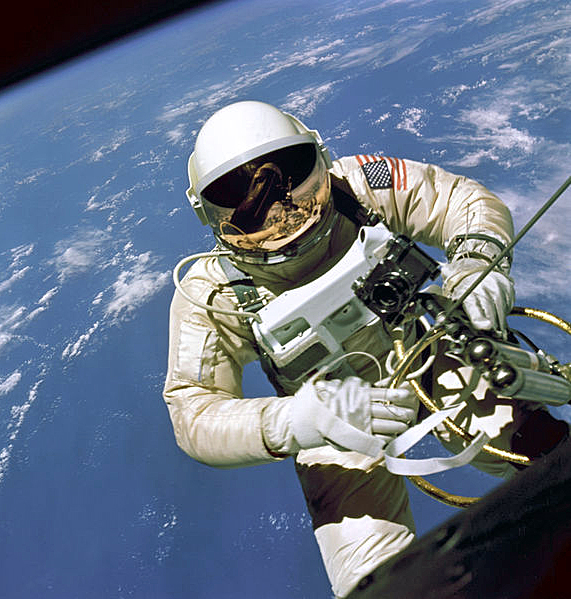
Fifty-two years ago this month, Gemini Astronaut Edward H. White II became the first American to perform what in NASA parlance is referred to as an Extra Vehicular Activity (EVA). In everyday terms, we simply call it a “spacewalk”.
White, Mission Commander James A. McDivitt and their Gemini spacecraft were launched into low Earth orbit by a two-stage Titan II launch vehicle from LC-19 at Cape Canaveral Air Force Station, Florida. The Gemini-Titan IV (GT-4) mission clock started at 15:15:59 UTC on Thursday, 03 June 1965.
On the third orbit, less than five hours after launch, White opened the Gemini IV starboard hatch. He stood in his seat and mounted a camera to capture his historic space stroll. He then cast-off from Gemini IV and became a human satellite.
White was tethered to Gemini IV via a 15-foot umbilical that provided oxygen and communications to his EVA suit. A gold-plated visor on his helmet protected his eyes from the searing glare of the sun. The spacewalking astronaut was also outfitted with a hand-held maneuvering unit that used compressed oxygen to power its small thrusters. And, like any good tourist, White also took along a camera to photograph the event.
Ed White had the time of his all-too-brief life in the 22 minutes that he walked in space. The sight of the earth, the spacecraft, the sun, the vastness of space, the freedom of movement all combined to make him excitedly exclaim at one point, “I feel like a million dollars!”.
Presently, it was time to get back into the spacecraft. But, couldn’t he just stay outside a little longer? NASA Mission Control and Commander McDivitt were firm. It was time to get back in; now! He grudgingly complied with the request/order, plaintively lamenting: “It’s the saddest moment of my life!”
As Ed White got back into his seat, he and McDivitt struggled to lock the starboard hatch. Both men were exhausted, but ebullient as they mused about the successful completion of America’s first space walk.
Gemini IV would eventually orbit the Earth 62 times before splashing-down in the Atlantic Ocean at 17:12:11 GMT on Sunday, 07 June 1965. The 4-day mission was another milestone in America’s quest for the moon.
The mission was over and yet Ed White was still a little tired. But then, that was really quite easy to understand. In the time that he was spacewalking outside the spacecraft, Gemini IV had traveled almost a third of the way around the Earth.
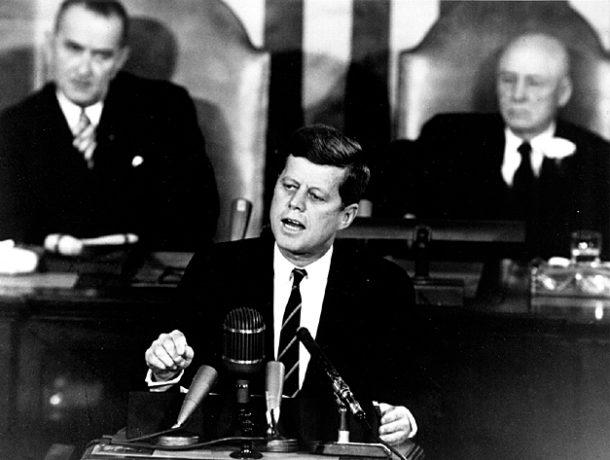
Fifty-six years ago this week, President John F. Kennedy boldly proposed that the United States conduct a manned lunar landing before the end of the 1960’s. The President’s clarion call to glory was delivered during a special session of the United States Congress which focused on what he called “urgent national needs”.
The transcript of that historic speech given on Friday, 25 May 1962 indicates that the ninth and last issue addressed by President Kennedy was simply entitled SPACE. The most stirring words of that portion of his speech may well be these:
“I believe that this nation should commit itself to achieving the goal, before this decade is out, of landing a man on the moon and returning him safely to the earth. No single space project in this period will be more impressive to mankind, or more important for the long-range exploration of space; and none will be so difficult or expensive to accomplish.”
Although he did not live to see the fulfillment of that goal, history shows that 8 years, 1 month, and 26 days later, the United States of America indeed landed men on the moon and returned them safely to the earth before the decade of the 1960’s was concluded.
Mission Accomplished, Mr. President.
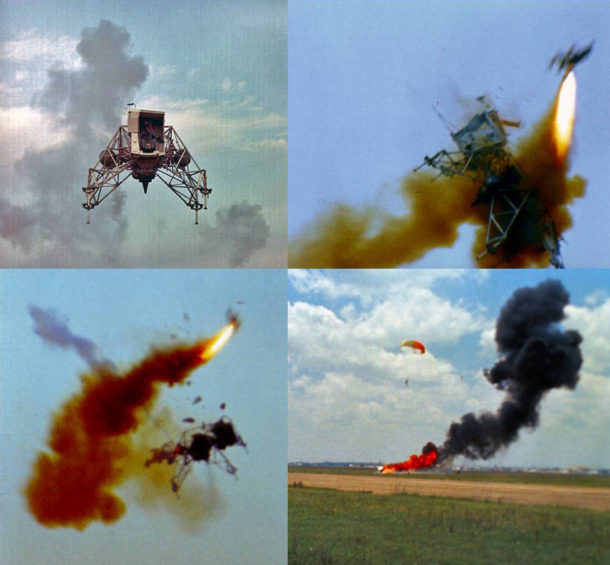
Forty-nine years ago this month, NASA Astronaut Neil A. Armstrong narrowly escaped with his life when he was forced to eject from the Lunar Landing Research Vehicle in which he was training. Armstrong punched-out only 200 feet above ground level and spent just 4 seconds in the silk before safely landing.
The Lunar Module (LM) was the vehicle used by Apollo astronauts to land on and depart from the lunar surface. This unique spacecraft consisted of separate descent and ascent rocket-powered stages. The powered descent phase was initiated at 50,000 feet AGL and continued all the way to landing. The powered ascent phase lasted from lunar lift-off to 60,000 feet AGL.
It was recognized early in the Apollo Program that landing a spacecraft on the lunar surface under vacuum conditions would be very challenging to say the least. To maximize their chances for doing so safely, Apollo astronauts would need piloting practice prior to a lunar landing mission. And they would need an earth-bound vehicle that flew like the LM to get that practice.
The Lunar Landing Research Vehicle (LLRV) was the answer to the above. The LLRV employed a turbojet engine that provided vertical thrust to cancel five-sixths of its weight since the gravity on the Moon is one-sixth that of Earth. The vehicle was also configured with dual lift rockets to provide vertical and horizontal motion. LLRV 3-axis attitude control was provided by a series of 16 small thrusters.
The LLRV was described by one historical NASA document as being “unconventional, contrary and ugly”. Known as the “Flying Bedstead”, the LLRV was designed for the specific purpose of simulating LM flight during the terminal phase of a lunar landing. The LLRV was not easy to fly in the “low and slow” flight regime in which it operated. The type was aesthetically unattractive in the extreme.
A pair of LLRV’s were constructed by Bell Aerosystems and flight tested at what is now the NASA Dryden Flight Research Center starting in October 1964. These vehicles were subsequently shipped to Ellington Air Force Base in Texas by early 1967. A number of flight crew, including Neil Armstrong, began LLRV flight training shortly thereafter.
Neil Armstrong made his first LLRV flight on Monday, 27 March 1967 in LLRV No. 1. (This occurred two months after the horrific Apollo 1 Fire.) Armstrong continued flight training in the LLRV over the next year in preparation for what would ultimately be the first manned lunar landing attempt in July of 1969
On Monday, 06 May 1968, Armstrong was flying LLRV No. 1 when the vehicle began losing altitude as its lift rockets lost thrust. Using turbojet power, Armstrong was able to get the LLRV to climb. As he did so, the vehicle made an uncommanded pitch-up and roll over. The attitude control system was unresponsive. The pilot had no choice but to eject.
Neil Armstrong ejected from the LLRV at 200 feet AGL as LLRV No. 1 crashed to destruction. The pilot was subjected to an acceleration of 14 G’s as his rocket-powered, vertically-seeking ejection seat functioned as designed. Armstrong got a full chute, but made only a few swings in same before safely touching-down back on terra firma. His only injury was to his tongue, which he accidently bit at the moment of ejection seat rocket motor ignition.
A mishap investigation board attributed the LLRV mishap to a design deficiency that allowed the helium gas pressurant of the lift rocket and attitude control system fuel tanks to be be accidently depleted. Thus, propellants could not be delivered to the lift rockets and attitude control system thrusters.
Neil Armstrong and indeed all of the Apollo astronauts who landed on the Moon trained in improved variants of the LLRV known as the Lunar Landing Training Vehicle (LLTV). This training was absolutely crucial to the success of the half-dozen Apollo crews who landed on the Moon. Indeed, there was no other way to adequately simulate moon landings except by flying the LLTV.
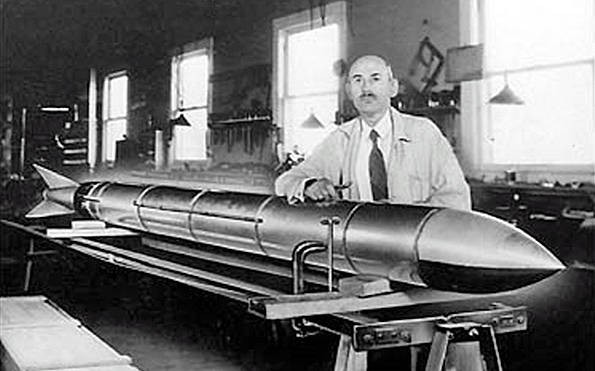
Eighty-two years ago this month, pioneering rocket scientist Robert H. Goddard and staff fired a liquid-fueled rocket to a record altitude of 7,500 feet above ground level. The record-setting flight took place at Roswell, New Mexico.
Robert Hutchings Goddard was born in Worcester, Massachusetts on Thursday, 05 October 1882. He was enamored with flight, pyrotechnics, rockets and science fiction from an early age. By the time he was 17, Goddard knew that his life’s work would combine all of these interests.
Goddard was a sickly youth, but spent his well moments as a voracious reader of all manner of science-oriented literature. He graduated in 1904 from South High School in Worcester as the valedictorian of his class. He matriculated at Worcester Polytechnic and graduated with a Bachelor of Science degree in physics in 1908. A Master of Science degree and Ph.D. from Worcester’s Clark University followed in 1910 and 1911, respectively.
Goddard spent the next eight years of his life working on numerous propulsion and rocket-related projects. Then, in 1919, he published his now-famous scientific treatise entitled A Method of Reaching Extreme Altitudes. In that paper, the press glommed on to Goddard’s passing mention that a multi-staged rocket could conceivably fly all the way to the Moon.
Goddard was roundly ridiculed for his fanciful prognostications about Moon flight. The New York Times was especially derogatory in its estimation of Goddard’s ideas and accused him of junk science. A Times editorial even criticized Goddard for his ”misconception” that a rocket could produce thrust in the vacuum of space.
Even the U.S. government largely ignored Goddard. This scornful treatment to which Goddard was subject hurt him profoundly. So much so that he spent the remainder of his life alienated from the denizens of the press as well as the dolts of governmental employ.
Despite the blow to his professional reputation, Goddard resolutely pressed on with his rocket research. Indeed, after more that five years of intense development effort, Goddard and his staff launched the first liquid-fueled rocket on Tuesday, 16 March 1926 in Auburn, Massachusetts. The flight duration was short (2.5 seconds) and the peak altitude tiny (41 feet), but Goddard proved that liquid rocket propulsion was feasible.
Goddard’s liquid-fueled rocket testing would ultimately lead him from the countryside of New England to the desert of the Great South West. With financial support from Harry Guggenheim and the public backing of Charles Lindbergh, Goddard transfered his testing activities to Roswell, New Mexico in 1930. He would continue liquid-fueled rocket testing there until May 1941.
On Friday, 31 May 1935, experimental rocket flight A-8 took to the air from Goddard’s Roswell, New Mexico test site at 1430 UTC. Roughly 15 feet in length and weighing approximately 90 pounds at lift-off, the 9-inch diameter A-8 achieved a maximum altitude of 7,500 feet (1.23 nautical miles) above the desert floor. Only a flight in March of 1937 would go higher (9,000 feet).
Robert Goddard was ultimately credited with 214 U.S. patents for his rocket development work. Only 83 were awarded in his life time. His far-reaching inventions included rocket nozzle design, regenerativley cooled rocket engines, turbopumps, thrust vector controls, gyroscopic control systems and more.
Goddard died at the age of 62 from throat cancer in Baltimore, Maryland on Friday, 10 August 1945. Many years would pass before the full import of his accomplishments was comprehended. Then, the posthumously-bestowed recognition came in torrents. In 1959, Congress issued a special gold medal in Goddard’s honor. The Goddard Spaceflight Center was so named by NASA in 1959 as well. Many more such bestowals followed.
Perhaps the most meaningful of the recognitions ever accorded Robert Hutchings Goddard occurred 24 years after his passing. It was in connection with the first manned lunar landing in July of 1969. And it was poetic not only in terms of its substance and timing, but more particularly in light of the source from whence the recognition came.
A terse statement in the New York Times corrected a long-standing injustice. It read: “Further investigation and experimentation have confirmed the findings of Issac Newton in the 17th century, and it is now definitely established that a rocket can function in a vaccum as well as in an atmosphere. The Times regrets the error.”
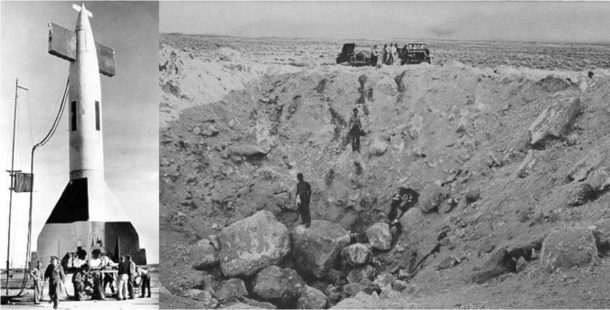
Seventy years ago this month, a Hermes II experimental missile, launched on a flight test out of White Sands Proving Ground, strayed from the test range and impacted near Ciudad Juarez, Mexico. The non-fatal mishap was later attributed to a breakdown in basic range safety protocol.
The V2 missile (Vengeance Weapon No. 2) was developed by Nazi Germany during World War II for the purpose of attacking Allied population centers. As such, it was the world’s first ballistic missile. History records that more than 3,100 V2’s were fired in anger, with London, England and Antwerp, Belgium being the prime targets. Approximately 7,200 people lost their lives in V2 attacks between September 1944 and March 1945.
The V2 as flown by the Third Reich measured 46 feet in length and had a maximum diameter of 5.4 feet. Launch weight was 28,000 lbs. The V2’s rocket motor produced a maximum thrust of about 60,000 lbs at sea level. Ethyl alcohol and liquid oxygen served as fuel and oxidizer, respectively. Approximately 19,000 pounds of propellants were consumed in 65 seconds of boost flight.
The V2’s payload was an explosive warhead weighing about 1,600 lbs. The fearsome missile’s kinematic performance was impressive for its time. Maximum velocity was around 5,200 ft/sec. After burnout, the rocket followed a ballistic flight path all the way to the target. Maximum altitude and range for wartime missions was on the order of 50 nm and 175 nm, respectively.
With the defeat of Nazi Germany, both the United States and the Soviet Union gained access to a large number of V2 missiles and many of the German rocket scientists who developed the weapon. The United States shipped 300 rail freight cars full of V2 missile components back home. Under Operation Paperclip, some 126 German engineering and scientific personnel were expatriated to the United States. Initially operating out of Fort Bliss, Texas and White Sands Proving Ground (WSPG), New Mexico, these men were destined to make major contributions to the American space program. Among their number was one Werhner von Braun.
Sixty-seven V2 missiles were launched from White Sands Proving Ground (WSPG) between 1946 and 1952. These flights gave the United States invaluable experience in all aspects of rocket assembly, handling, fueling, launching and tracking. Indeed, V2 rocket technology and lessons-learned were applied in the development of all subsequent American launch vehicles ranging from the Redstone to the Saturn V. WSPG V2’s were also used to conduct numerous high altitude and space research experiments. Many aerospace “firsts” were achieved along the way. The first biological space payloads, first photographs of earth from space and the first large two-stage rocket flights involved the former vengeance weapon.
Rocket system reliability was not particularly good in the 1940’s and 1950’s. For instance, only 68% of the WSPG V2 flights were considered successful. Range safety was in its infancy too. In particular, the comprehensive range safety protocol that governs flight operations at today’s test ranges did not yet exist. This state of affairs was largely due to the fact that much of the systems knowledge and operations lessons-learned required to establish such a protocol had yet to be acquired. An incident that occurred in May of 1947 serves to underscore the reliability and safety issues just noted.
The Hermes II missile (RTV-G-3/RV-A-3) was a derivative of the basic V2 vehicle. The payload was a forward-mounted, winged, ramjet engine test bed. The V2’s tail surfaces were enlarged to counter the destabilizing influence of the payload’s wing group. The idea was to get the payload up to a Mach number beyond 3 and separate it from the V2 booster. Following separation, the ramjet pack would be ignited and thrust established. The payload would then fly a programmed altitude-Mach number flight profile. While ambitious on several levels, the project was certainly emblematic of this era of aerospace history wherein all manner of ideas took to the skies.
On Thursday, 29 May 1947, Hermes II was fired from Launch Complex 33 at White Sands Proving Ground. It was approximately 1930 hours local time. It is noted that the ramjet pack was not active for this first flight. The Hermes test vehicle was supposed to pitch to the north and fly uprange. Instead, it pitched to the south and backrange toward El Paso, Texas. Post-flight analysis revealed that the new inertial guidance system employed by the Hermes missile had been wired backwards! This human error directly and adversely affected rocket system reliability.
The WSPG Range Safety Officer(RSO) had both the authority and responsibility to hit the destruct button once it was obvious that the Hermes II was errant. However, a project scientist physically restrained the RSO from doing so! Apparently, the scientist was of the (evidently strong) opinion that the test vehicle’s propellant load should not be wasted on such trivial grounds as the safety of the El Paso populace. Unimpeded now, the errant rocket continued its flight. Range safety protocol would have to be improved and understood by all participants prior to the next flight!
The Hermes II reached a maximum altitude of 35 nm on its unplanned trip to the south. During its 5 -minute flight, the vehicle overflew the city of El Paso and impacted near the Tepeyac Cemetery located 3.5 miles south of Ciudad Juarez, Mexico. The quasi-Mach 1 impact formed a crater that measured 50 feet in width and 24 feet in depth. Enterprising local residents gathered what little airframe wreckage that survived impact and sold it to souvenir seekers!
United States Army authorities quickly arrived on scene to ascertain the extent of the damage caused by the errant missile’s unannounced and unwelcome arrival. Happily, no lives were lost. Profuse apologies were delivered to and graciously accepted by Mexican government officials. The United States paid for all damages and effected a complete clean-up and remediation of the impact site.
A member of the team of expatriated German scientists who conducted the Hermes II flight test later was quoted as saying: “We were the first German unit to not only infiltrate the United States, but to attack Mexico from US soil!” Not nearly so amused, the Army tightened-up range safety protocol at WSPG in the aftermath of the international incident. Interestingly, historical evidence points to the likelihood that the Hermes II vehicle never did carry an active ramjet payload on test flights out of WSPG.











